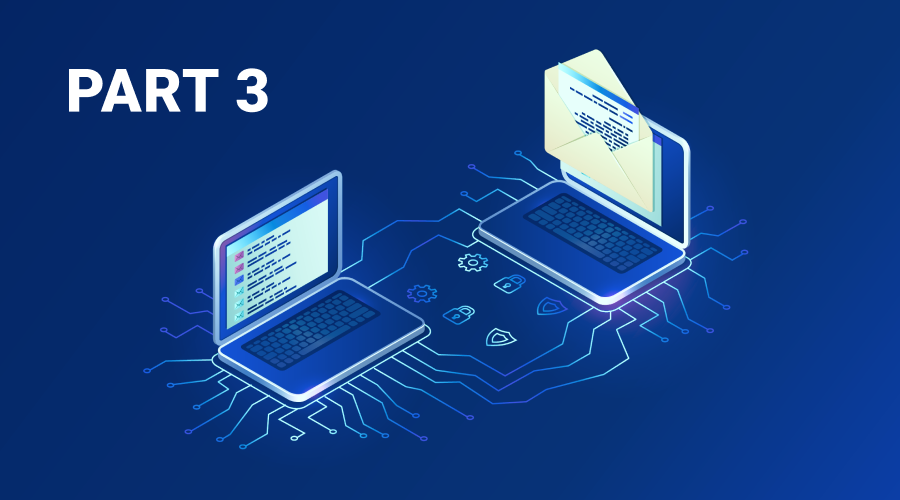In Part Two of the three-part series of articles on How to Send Secure, Encrypted Emails (and Attachments), we considered criteria of secure email; types of encryption systems; and add-ins as one of many implementation options of security email solutions.
In this last but not least part, we will close the books on the early material and learn how you can protect your data by the example of the StealthMail email security solution.
Drawing a Conclusion
Either it is your corporate information or your private one, there is a need to protect such information from inner or outer dangers.
And security is what encrypted email is all about.
Cybersecurity Criteria
To use email encryption properly, you should point out key points, which will help you to achieve security for confidential data.
At StealthMail, we defined email security criteria, which cybersecurity software solutions have to meet:
- Encryption must be performed on the client’s device.
- Data must be encrypted on a device, in transit, and at rest.
- Only your company must control both storage and encryption keys.
- Data must be transmitted through secure communication channels.
Any un-authenticated user is forbidden to access data so that the data consistency can be retained.
StealthMail Add-In for Outlook has only those functions which aim to provide security to your correspondence and those that you truly need in daily work, without having to overpay for the function's users will hardly ever use.
For example, you can schedule revoke access rights from any message from any device; deny copy, print, or forward emails.
This way of delivering security service to business emails also reduces the time and resources required to train users because most business professionals are already familiar with Microsoft Outlook.
Another benefit is that users aren't laying their confidential information on the line: in StealthMail data never leaves the company's security perimeter.
How to Send Secure Emails with StealthMail
Email security is the process of using email encryption to send messages that can only be opened by the intended recipient.
This is a pivotal point in secure email communication to comprehend because one of the notorious cyberattacks acts in a way where the attacker secretly relays the communications between two parties, making them believe that they are directly communicating with each other. It is called Man-in-the-Middle attack.
There are many examples of how this attack can be carried out. So when you know how you can protect your emails from the man in the middle attack, you can mitigate risks of potential data breach miles better.
StealthMail addresses this and others cyber attacks (business email compromise, phishing, email spoofing, packet sniffing, denial-of-service attack, malware) with an approach where external recipients can read encrypted messages and send an encrypted reply in the reasonably secure way: the email recipient follows a crypto-link (located in a message body which points to encrypted data) to login to StealthMail’s account to receive their encrypted messages, files and documents.
This allows the emails you send to remain encrypted the entire time and, at the same moment, allows you to control (i.e., grant and/or limit access rights) who can view and forward your emails.
The process is fairly simple: it will take only a couple clicks to open a secure window and reply, because the encrypted message comes with clear instructions.
StealthMail Specifics
Taken all this security measures in to practice a team of StealthMail has developed an enterprise-grade secure email solution, which allows:
- Encrypt email contents and, individually, its attachments.
- Provide sole control over the encryption keys (encryption keys are stored in your company’s secure perimeter).
- Store your emails in the encrypted state on your device -
- Revoke access to emails (manage and revoke access at any time).
- Encrypt emails and attachments in transit, at rest and in use.
- Get prospective about who is sharing sensitive data, with whom and who has access to it.
- Protect your data and maintain regulatory compliance.
To get more broader technical insight about the StealthMail email security solution, download the Technical Datasheet.
This is the end of the three-part blog series. Please read part one and part two.
Now that we have outlined how to send secure, encrypted emails and attachments, hope that the information presented in these miniseries blog posts has got you food for thought, and you are ready to make the next conscious steps on protecting your business email communication.
You might also be interested in:
Link in die Zwischenablage kopiert!

